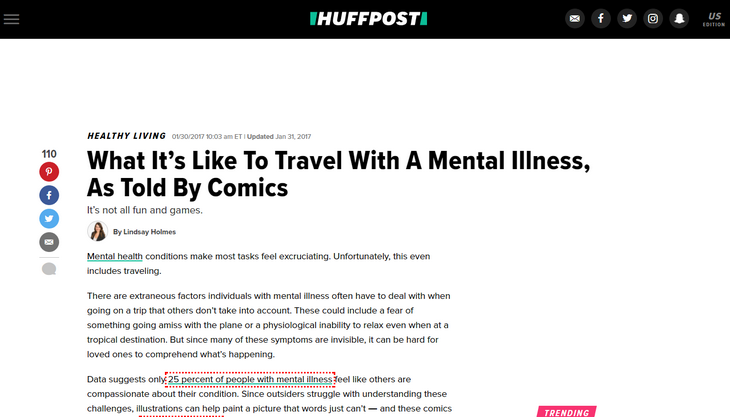The subject line dilemma
After reviewing the most successful subject lines, I found that question marks and rankings (including numbers and short titles) report the highest opening rates. Here some examples:
- How to check your hotel room for bedbugs?
- 5 European road trips for your electric car
- Company logos: how colors persuade you to trust a brand?
We usually share our subject lines with the team and write many different versions of it until we are confident enough to use it. We send a few ‘beta’ emails and tweak the copy based on the open rate results that come back to us. Once we get our open rates over 40% we stick with that subject line.
The success of a subject line also depends on the person you send the email to. We spend a lot of time prospecting to find the right journalist to publish our content. This process is hugely valuable because when you find the right site, section and person to write about your piece, you don’t have to explain why your content is important to them: your subject line simply clicks in the right place.
Key subject line takeaway
Pitch the story to your colleagues and experiment to find the best words and ways to phrase things before you send anything to journalists.
The Prospecting Process
To optimise the prospecting process we use a range of tools, such as Twitter, BuzzSumo and BuzzStream.
Twitter is my favourite tool because it helps you find specific information about what journalists or influencers like and what they don’t. It also sheds some light on them as individuals, and offers insight into how often they post.
Information is power, so use this power to create your subject line and a more personalised outreach email.
With Twitter, you can find journalists who are specifically interested on your topic. For example, I am doing a piece about motorsports, so I look for F1 writers, F1 editors and sports editors:

After you find the contact, take a moment to review their profiles and find basic information to inspire your outreach email or clue you in on things to avoid.
BuzzStream helps you discover new websites and filter the contacts by topics, Domain Authority and location. This tool also helps you find out the last time a journalist published an article and what topics they have written about.

BuzzSumo helps you find the right bloggers and influencers. It shows you what is trending and who is sharing the content. You can find email addresses and other relevant information to help you better understand the people writing about the topic.

To finish our prospecting process we discuss certain contacts, exchanging experiences around the best way to approach them, especially when it comes to high profile publications.
Writing the outreach email
Writing a good outreach email depends on two simple factors: 1) you have a strong piece of content based on interesting research, and 2) you’ve done your homework and found exactly the right people to contact. If you have done your research well, you will have a clear idea of how to personalise your emails and pique the journalist’s interest.
With that in mind, we try to be as strategic as possible when writing our outreach emails. We only disclose data that is interesting and appealing and that we strongly believe will be relevant for the person we are contacting. Don’t overwhelm a journalist with tons of irrelevant information or explanations.
Take a look at this example of successful outreach:

And the live links?
As a result of this exercise, we have a total of 353 live links for several pieces and clients. Here are some examples of the coverage.





